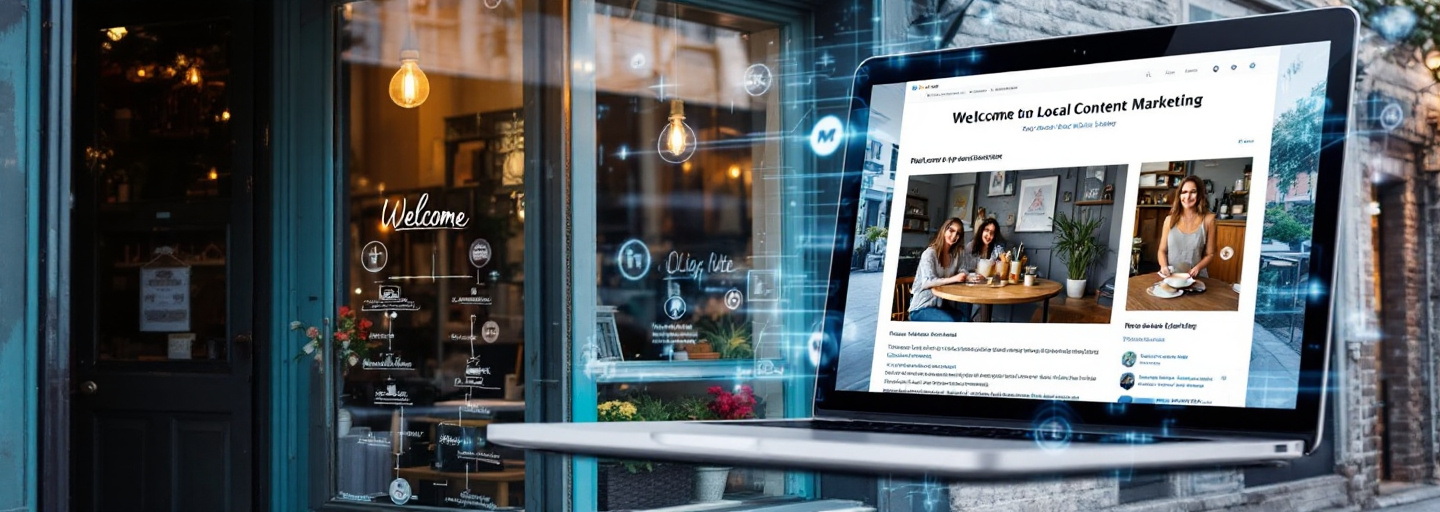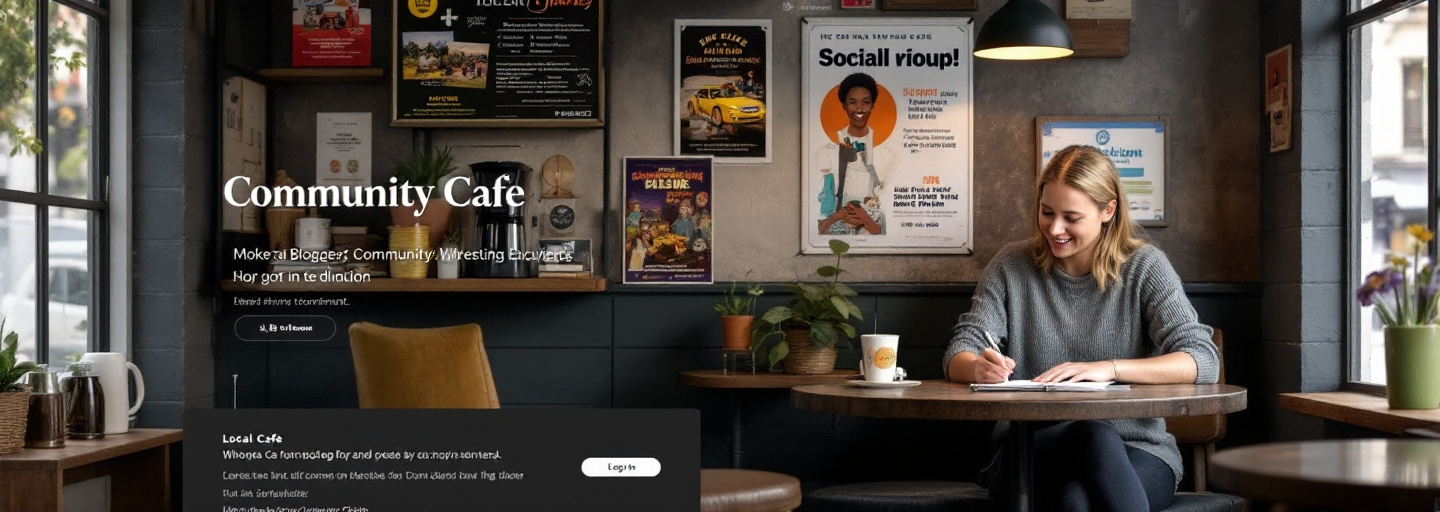Best Blog Techniques for Local Businesses
Discover the best blogging techniques for local businesses to boost visibility, engage the community, and improve local SEO rankings.

Best Blog Techniques for Local Businesses
Small businesses thrive on community connections. While 97% of consumers search online for local services, many local businesses struggle to capture this digital attention. Strategic local business blogging bridges this gap, turning neighborhood presence into online visibility.
Why Blogging Matters for Local Businesses
Local coffee shops, boutiques, and service providers often wonder if blogging is worth their limited time. The answer lies in the changing habits of local consumers. When someone searches for "best bakery downtown" or "trusted plumber near me," they're not just looking for a business card – they're seeking stories, expertise, and community connection.
Blogging for small businesses serves as your digital storefront, working around the clock to attract and inform potential customers. For instance, a local bakery sharing weekly recipes doesn't just showcase products – it demonstrates expertise while building trust. These articles become valuable resources that bring customers back, both online and in person.
SEO for local blogs benefits significantly from regular blogging. By naturally incorporating location-specific terms like neighborhood names or local landmarks, businesses improve their chances of appearing in nearby searches. A real estate agent writing about "Historic Districts in Downtown Charleston" or "Best Family Neighborhoods in West Ashley" creates content that resonates with local house hunters while boosting search visibility.
The beauty of blog content lies in its versatility. A single well-written post about your signature service can transform into:
- Social media updates highlighting key points
- Email newsletter content educating subscribers
- Shareable infographics for local business groups
- Reference material for customer inquiries
Most importantly, consistent blogging establishes your business as a community resource. When a local gym shares posts about neighborhood running routes or partners with nearby health food stores for nutrition tips, it strengthens local business networks while providing genuine value to residents.
Remember, every blog post is an opportunity to connect with your community in ways that generic advertising cannot match. Effective blogging positions your business as a trusted voice in the community, fostering relationships beyond transactions.
Choosing the Right Topics for Local Audiences

Local businesses often overlook their most valuable content asset: their deep connection to the community. While national chains write broad, generic posts, your local expertise offers unique storytelling opportunities that resonate with nearby customers.
Start by tapping into your daily customer interactions. A neighborhood bookstore might notice customers frequently asking about local author events. This observation could spark a series of blog posts profiling hometown writers, complete with reading recommendations and upcoming signings. These posts naturally incorporate valuable local keywords while providing genuine community value.
Consider these proven content approaches:
- Behind-the-scenes features showing your involvement in community projects
- Seasonal guides tailored to local events and weather patterns
- Success stories featuring real customers (with their permission)
- Expert commentary on local development plans or industry changes affecting your area
- Collaborative posts highlighting complementary local businesses
Keyword research tools reveal surprising local search patterns. For instance, a downtown restaurant might discover high search volume for "best outdoor dining spots in [neighborhood]" or "where to eat before [local theater] shows." These insights help shape content that matches actual community interests.
Beyond individual blog posts, collaborating with other local businesses can expand reach and engagement, turning a single topic into a multi-channel conversation.
Your customer feedback provides another rich source of blog topics. If clients frequently ask about product care or service timing, transform these FAQs into detailed guides. A local jeweler could write about "How to Care for Jewelry in [City's] Humid Climate," addressing a specific regional concern while demonstrating expertise.
Optimizing Blog Posts for Local SEO

Building on the importance of local SEO strategies mentioned earlier, optimizing blog content strategically ensures businesses fully capitalize on the growing trend of "near me" searches.
| SEO Factor | Best Practices | Impact on Local Search |
|---|---|---|
| Location-Specific Keywords | Integrate naturally into headings, body text, and image alt text | Improves relevance for "near me" searches |
| Google My Business (GMB) Integration | Share blog posts as GMB updates with links back to your site | Boosts visibility in local map searches |
| Schema Markup | Use local business schema to highlight location and services | Enhances chances of appearing in rich search results |
| Internal Linking | Link to other relevant local content on your site | Encourages deeper engagement and improves SEO |
Location-specific keywords require strategic placement without compromising readability. Instead of awkwardly stuffing "best plumber Atlanta" into every paragraph, weave location naturally into your narrative. For example, "Our recent pipe repair project in Virginia Highland showed why Atlanta homeowners should check their water pressure regularly" sounds authentic while incorporating location context.
Your meta descriptions and title tags serve as local search billboards. Rather than generic titles like "Monthly Business Update," opt for specific formats:
- "Inside Look: [Business Name] Serves [Neighborhood] With Sustainable Coffee"
- "Local Guide: 5 Hidden Gems Near [Landmark] in [City]"
- "[Service] Tips for [City] Residents: Expert Advice From [Business Name]"
Instead of "dental-office.jpg," use descriptive filenames like "downtown-atlanta-family-dentist-office.jpg" and include location details in alt text when relevant.
Engaging the Local Community Through Content

To maximize engagement, blogs should encourage two-way interactions, turning readers into active participants.
Engaging local content authentically showcases your community impact. Consider featuring customer success stories with permission. A local gym might spotlight a member's fitness journey, complete with before-and-after photos and quotes about how the supportive neighborhood environment made the difference. These testimonials resonate because readers recognize locations, faces, and shared experiences.
Interactive content creates two-way conversations. Try these engagement strategies:
- Run polls about upcoming community events you might sponsor
- Create neighborhood-specific surveys about local preferences or challenges
- Live-blog coverage of local festivals or markets
- Host Q&A sessions with local experts in your field
For businesses looking to streamline their blogging efforts, platforms like BlogBuster offer AI-powered tools to automate content creation, optimize SEO, and enhance engagement.
Measuring Blog Performance and Adjusting Strategies
Smart measurement separates successful local business blogs from digital ghost towns. A boutique owner in Seattle learned this lesson when analytics revealed their general fashion posts attracted nationwide readers but few local customers. After refocusing on Seattle-specific style guides and local event coverage, their foot traffic increased significantly.
Analyzing blog performance helps refine content strategy, ensuring future posts align with audience interests and engagement patterns.
- Geographic traffic sources to ensure local reach
- Time spent on location-specific content
- Conversion rates from blog posts to store visits or bookings
For those ready to take their blogging to the next level, sign up for BlogBuster and start optimizing your content strategy today.